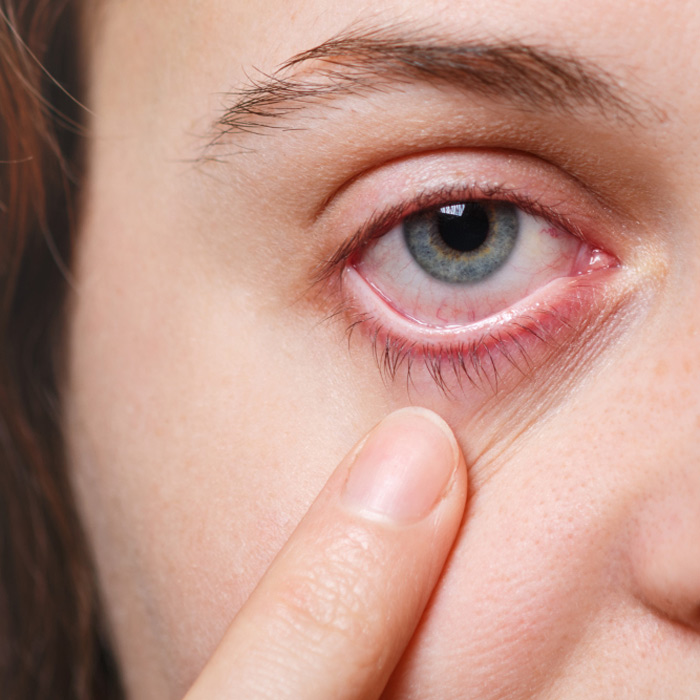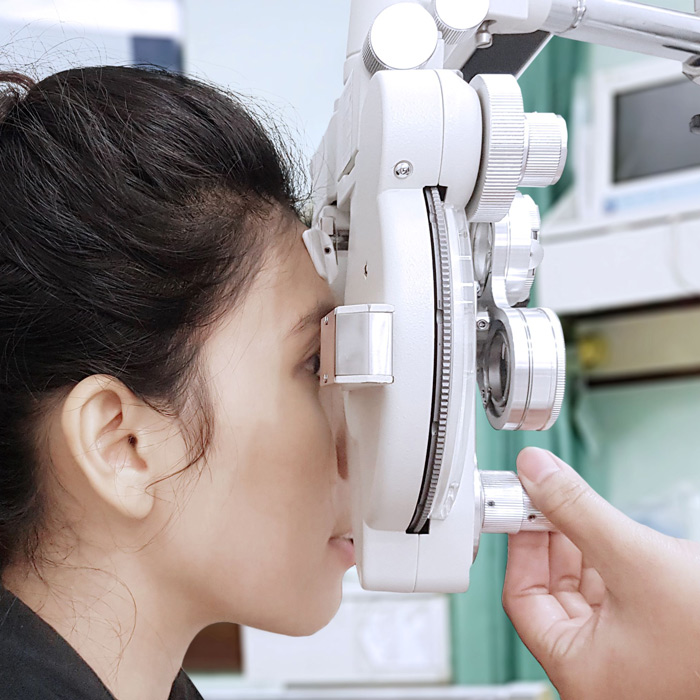Refractive Errors
Refractive errors occur when the eye cannot properly focus light onto the retina, leading to blurred vision. The most common types include myopia (nearsightedness), hyperopia (farsightedness), astigmatism, and presbyopia. These conditions are easily diagnosed during routine eye examinations and can be effectively managed with glasses, contact lenses, or corrective procedures such as LASIK.
Myopia is a common refractive error where distant objects appear blurry while near vision remains clear. It typically begins in childhood and can worsen over time. Myopia is easily diagnosed during an eye exam and managed with glasses, contact lenses, or laser vision correction.
Childhood myopia may be managed with atropine eye drops.
Hyperopia causes near vision to be blurry, although distance vision may remain unaffected. This condition can lead to eye strain or headaches during tasks like reading. Treatment options include prescription lenses or refractive surgery to improve focus.
Astigmatism occurs when the cornea is irregularly shaped, leading to distorted or blurred vision at all distances. It may occur alongside myopia or hyperopia. Vision can be corrected with glasses, contact lenses, or laser procedures.
Presbyopia is an age-related condition where the eye loses its ability to focus on close objects. It usually becomes noticeable after the age of 40. Common solutions include reading glasses, bifocals, or multifocal lenses.

Ocular Surface & Eyelid Conditions
Conditions like dry eyes, pterygium, blepharitis, and chalazion affect the surface of the eye and eyelids, often causing discomfort or blurred vision. They may result from inflammation, gland blockage, or environmental factors. Most cases can be effectively managed with medication, minor procedures, and proper eye care.
Dry eyes happen when your eyes don’t produce enough tears or when the tear film evaporates too quickly. This can cause stinging, irritation, or a gritty feeling. Management includes lubricating eye drops, prescription treatments, and tear conservation techniques.
A pterygium is a benign growth of tissue on the white of the eye that may extend onto the cornea. Often related to sun or dust exposure, it can cause redness or discomfort. Larger or vision-threatening growths may require surgical removal.

Blepharitis is inflammation of the eyelid margins, often linked to skin conditions or bacterial buildup. It can cause red, itchy, or flaky eyelids. Treatment focuses on eyelid hygiene and, if needed, medicated ointments or drops.
A chalazion is a painless eyelid lump caused by a blocked oil gland. It may resolve on its own or with warm compresses. Persistent chalazia may require minor in-clinic procedures to remove the blockage.





